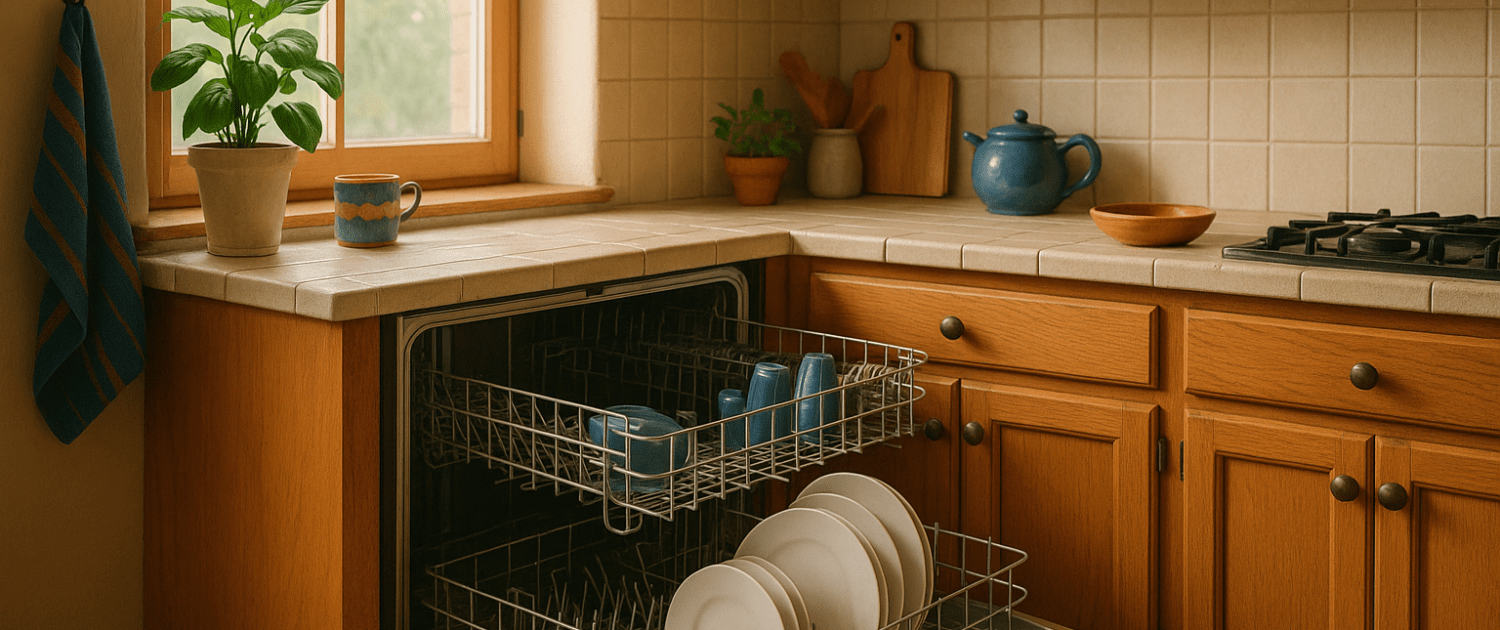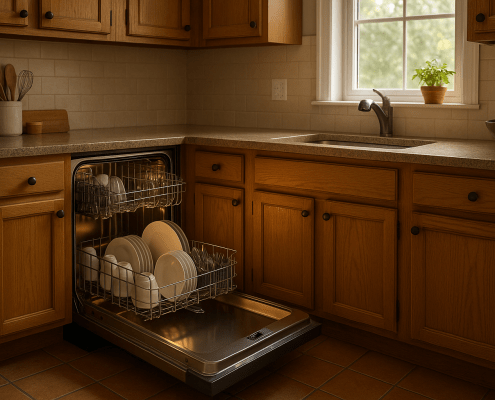F98 GE dishwasher error code: A troubleshooting guide
Steven E / Wednesday May 21, 2025
Experiencing an F98 error code on your GE dishwasher can be a frustrating and confusing issue, however understanding the causes and how to troubleshoot it can help you quickly resolve the problem and get your dishwasher back in working order. We’re here to help.
If you find out that you need any replacement parts for your appliance while you’re troubleshooting, you can enter your model number at AppliancePartsPros.com to order them. Most orders arrive in just two business days, and we have thousands of free guides to show you how to install your new parts.
The information in this article may not apply to your specific appliance model. We recommend consulting your manufacturer’s documentation or contact us with any questions.
What the error code means
The F98 error code on a GE dishwasher indicates an issue with the turbidity sensor and the dishwasher’s drain system. Specifically, this code is triggered when the turbidity sensor detects that the water is not properly draining from the sump (the basin at the bottom of the dishwasher where water collects).
The turbidity sensor is responsible for monitoring the water clarity during the drain cycle. It does this by shining an LED light into the water and measuring the amount of light that is reflected back. This measurement is used to determine if the water has been sufficiently drained from the sump.
When the turbidity sensor does not detect the expected decrease in water turbidity (cloudiness) during the drain cycle, it triggers the F98 error code. This could be caused by a few different issues, including:
- Clogged or malfunctioning drain pump
- Faulty turbidity sensor
- Blockage in the drain line or sump
There should be some water left in the sump at the end of the cycle, however if the dishwasher is unable to properly drain most of the water from the sump, it will be unable to complete the wash cycle. This can lead to poor cleaning, excessive water left standing in the tub, and potential issues with mold or odors.
Safety precautions
When working on any appliance, remember to keep safety first. Here are some tips to keep in mind:
- Always power off and unplug your appliance or switch off the circuit breaker before attempting any maintenance or replacement work. This keeps you safe by preventing any risk of injury from electric shock.
- Wear insulated work gloves to protect your hands from sharp metal parts, pinching hazards and debris.
- Take your time and don’t rush while working to prevent accidents and personal injuries.
- Work in a well-lit area so you can clearly see and access the interior parts.
- Clear your workspace of clutter and other obstacles. Keep children and pets away from the work area.
- Never work on internal parts with bare wet hands. Make sure the work area is completely dry.
- Check your user manual to see if there are specific installation or safety instructions for your part or appliance.
- Be gentle when handling or removing parts. Excessive force might damage the appliance or cause injury.
- Wear safety glasses when working with chemicals, dust or cleaning large debris to prevent injury.
- If the appliance has recently been used, give it plenty of time for any heating parts to cool down before working on it.
- Take pictures or make a note of wiring terminals or other connections before disconnecting to prevent any problems with reassembly.
- When working with wires, avoid touching any exposed wires or terminals. If you need to touch a wire, use a non-conductive tool or wear insulating gloves to prevent electrical shock.
Troubleshooting steps
- Locate the sump assembly at the bottom of the dishwasher.
- Disconnect any hoses or wiring that are connected to the sump assembly.
- Unscrew or unlatch the sump assembly and carefully remove it from the dishwasher.
- Set a multimeter to measure resistance and check the resistance of the drain pump motor windings. The resistance should be approximately 27 ohms.
- Manually rotate the drain pump impeller to ensure it moves freely without any obstructions.
- If the drain pump does not operate as expected, it will need to be replaced.
- Locate the turbidity sensor harness connection on the sump assembly.
- Press the tab on the connector and gently pull to disconnect the harness.
- Inspect the harness and connector for any signs of damage or corrosion.
- Use a multimeter to measure the resistance of the turbidity sensor and verify it is within the expected range.
- The turbidity sensor should have a resistance of approximately 11k ohms at 75°F.
- If the sensor is not functioning correctly, it will need to be replaced.
- Thoroughly clean the sump assembly and surrounding area to remove any debris or blockages.
- Inspect the drain line for any clogs or obstructions and clean it as needed.
- Place the sump assembly back into the dishwasher and reconnect any hoses or wiring.
- Secure the sump assembly using the screws or latches.
- Plug the dishwasher back into the power source or turn the circuit breaker back on.
- Run a full wash cycle to ensure the dishwasher is functioning correctly and the error code is resolved.
More information
Thank you for reading! We hope you found this information useful to get your dishwasher working again.
If you have any other appliance repair needs or projects, don’t hesitate to explore our thousands of free videos and troubleshooting guides available. If you need replacement parts or some extra help, grab your model number and head over to AppliancePartsPros.com, where you can chat with a pro, order parts, read our DIY blog, and more.
Be sure to subscribe to us on YouTube and follow us on Facebook, Twitter, and Instagram!
With nearly a decade of experience in providing top-notch customer service regarding appliance parts and repair, Steven enjoys sharing practical advice, troubleshooting tips, and interesting information to help readers stay informed.





